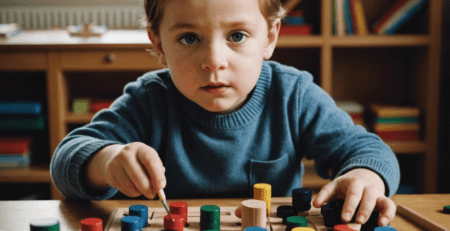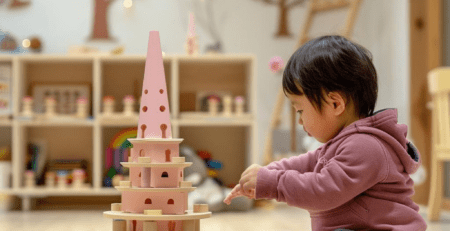
11
Montessori Education for Freedom and Nurturing Independence
In the world of education, the Montessori method has long been renowned for its unique approach to fostering independent learning and cultivating a sense of personal responsibility in young students. Central to this philosophy is the concept of “freedom within limits”, which empowers children to explore and engage with their environment while also providing a framework of boundaries and guidelines. In this article, we will delve into the fundamental principles of Montessori freedom within limits, and explore how this approach shapes the learning experiences of children in the classroom. From the importance of autonomy to the role of structure in fostering growth, we will uncover the intricacies of this foundational tenet of Montessori education. Join us as we unpack the essence of “freedom within limits” and uncover the transformative impact it has on the development of young minds.
Table of Contents
- Understanding Montessori’s Approach to Freedom Within Limits
- The Importance of Setting Boundaries in Montessori Education
- Creating a Balance Between Freedom and Discpline in the Montessori Classroom
- Practical Applications of Freedom Within Limits in a Montessori Environment
- Q&A
- The Way Forward
Understanding Montessori’s Approach to Freedom Within Limits
Montessori’s approach to freedom within limits is a fundamental aspect of the Montessori philosophy. It emphasizes the idea that children should have the freedom to explore and learn within a carefully structured environment that provides clear boundaries and guidelines. This approach is based on the belief that children learn best when they are given the opportunity to make choices and explore their interests, while also being guided by clear and consistent boundaries.
One of the key aspects of Montessori’s approach to freedom within limits is the idea that children should have the freedom to choose their own activities and work at their own pace. This approach is designed to foster independence and self-discipline, as children are encouraged to take responsibility for their own learning and behavior. By providing children with the freedom to make choices within a structured environment, Montessori educators believe that children will develop a strong sense of self-confidence and autonomy.
Another important aspect of Montessori’s approach to freedom within limits is the emphasis on respect for the individual needs and abilities of each child. Montessori educators strive to create an environment that supports the unique interests and learning styles of each child, while also providing clear boundaries and guidelines for behavior. This approach is designed to foster a sense of respect, empathy, and understanding among children, as they learn to work and play together in a harmonious and cooperative environment.
The Importance of Setting Boundaries in Montessori Education
Montessori education emphasizes the concept of “freedom within limits” as a key principle in the classroom environment. The freedom to explore, learn, and make choices is integral to the Montessori method, but it is equally important to establish boundaries to ensure a harmonious and productive learning environment for children.
Here are some reasons why setting boundaries in Montessori education is crucial:
1. Promotes Respect: By establishing clear boundaries, children learn to respect the space, materials, and the rights of others in the classroom. This fosters a sense of responsibility and consideration for the needs of their peers, promoting a respectful and peaceful learning environment.
2. Encourages Independence: Boundaries create a structure that allows children to develop a sense of independence within a framework of rules and expectations. This empowers them to make choices within the boundaries set, promoting self-discipline and autonomy in their learning journey.
3. Ensures Safety: Setting boundaries helps to maintain a safe and secure environment for children to explore and learn. Whether it’s establishing rules for using classroom materials or guidelines for interactions with others, clear boundaries minimize the risk of accidents and conflicts, allowing children to focus on their learning and development.
| Benefits of Setting Boundaries in Montessori Education |
|---|
| Promotes respect |
| Encourages independence |
| Ensures safety |
Creating a Balance Between Freedom and Discpline in the Montessori Classroom
Understanding Montessori Freedom within Limits
In a Montessori classroom, freedom within limits is a fundamental concept. It emphasizes the importance of providing children with the autonomy to choose their activities and work independently, while also setting clear guidelines and boundaries to ensure a respectful and harmonious environment. By giving children the freedom to make choices within a structured framework, they develop a sense of responsibility and self-regulation. This approach fosters a positive learning experience and promotes intrinsic motivation.
Implementing Structure through Practical Life Activities and Work Cycle
One way to create a balance between freedom and discipline in a Montessori classroom is through practical life activities and the work cycle. Practical life activities, such as pouring, washing, and polishing, provide children with opportunities to develop fine motor skills, concentration, and a sense of order. These activities are presented in a structured manner, teaching children to follow a sequence of steps and to complete tasks with precision and care. Additionally, the work cycle, which includes uninterrupted blocks of time for children to engage in independent work, allows them to explore their interests while learning to manage their time and focus.
Promoting Self-Discipline and Respect for Others
Another essential aspect of finding balance in the Montessori classroom is cultivating self-discipline and respect for others. Through modeling and gentle guidance, teachers help children understand the importance of treating materials, the environment, and peers with care and consideration. By instilling these values, children learn to navigate their freedom responsibly and with empathy towards others. This creates a community where mutual respect and cooperation thrive, resulting in a nurturing and enriching learning environment.
| Benefits | Impact |
|---|---|
| Enhanced independence | Promotes self-reliance and confidence |
| Develops self-regulation | Encourages autonomy and responsibility |
| Fosters intrinsic motivation | Ignites a love for learning and exploration |
Practical Applications of Freedom Within Limits in a Montessori Environment
Montessori education is built on the concept of providing children with freedom within limits, allowing them to explore and learn at their own pace while still maintaining a structured environment. This approach fosters independence, self-discipline, and a love for learning, all of which are crucial for a child’s development. Here are some practical applications of this philosophy in a Montessori environment:
- Choice of Activities: Children are given the freedom to choose their own activities from a carefully curated selection of materials. This allows them to follow their interests and work on tasks that are developmentally appropriate for them.
- Self-Correction: Montessori materials are designed in a way that allows children to correct their own mistakes, promoting independence and critical thinking skills.
- Respect for Others: Within the limits of the Montessori environment, children are encouraged to respect the work and space of others, promoting a sense of community and cooperation.
By providing children with freedom within limits, a Montessori environment allows them to thrive and develop important life skills that will serve them well into adulthood.
Q&A
Q: What is “Montessori freedom within limits”?
A: Montessori freedom within limits is a fundamental principle in the Montessori method of education, which emphasizes giving children the freedom to explore and learn at their own pace, within a structured and supportive environment.
Q: How does this concept apply to the Montessori classroom?
A: In a Montessori classroom, children are given the freedom to choose their activities and work independently, while also being guided by clear boundaries and expectations set by the teacher. This creates a balance between independence and structure, allowing children to develop self-discipline and a sense of responsibility.
Q: What are the benefits of implementing “Montessori freedom within limits”?
A: By allowing children to make choices and learn from their mistakes within a safe and supportive environment, ”Montessori freedom within limits” promotes self-confidence, problem-solving skills, and a love for learning. It also fosters a sense of respect for others and a strong sense of community within the classroom.
Q: How do teachers support “Montessori freedom within limits”?
A: Teachers play a crucial role in providing guidance, setting boundaries, and modeling respectful behavior. They observe and assess each child’s unique needs and interests, and provide the necessary materials and guidance to support their individual learning journeys.
Q: How can parents incorporate “Montessori freedom within limits” at home?
A: Parents can create a home environment that allows for freedom of choice within reasonable limits, and support their children’s independence by providing age-appropriate tools and materials for exploration and learning. They can also establish consistent routines and clear expectations to help their children thrive within the framework of “Montessori freedom within limits.”
The Way Forward
In conclusion, Montessori’s philosophy of freedom within limits not only nurtures independence and self-discipline in children, but also fosters a sense of responsibility and respect for themselves, others, and their environment. By providing children with the tools and guidance to explore and learn at their own pace, Montessori education empowers them to become confident, capable individuals who are well-equipped to navigate the challenges of the world around them. As we embrace the concept of freedom within limits, let us continue to support and encourage the growth and development of our children, honoring their unique abilities and potential. Let us remember that through the balance of freedom and responsibility, we can help mold the leaders, thinkers, and innovators of tomorrow.










